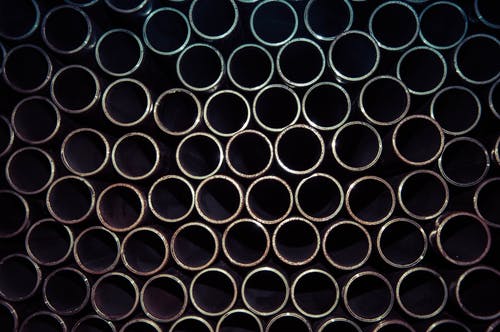The world of construction is a playground of continuous evolution. One trend that has gained momentum recently is the renting or hiring heavy equipment for construction projects. It’s easy to see why, given its myriad advantages, ranging from cost-effectiveness to improved efficiency.
Why Rent Heavy Equipment?
A set of benefits largely influences the decision to rent heavy equipment for construction projects it offers.
The Benefits of Renting Heavy Equipment for Construction
Here’s why so many industry leaders are turning to rentals:
- Financial Benefits: Renting allows for better cash flow management and reduces maintenance and repair costs. In addition, hiring equipment when needed eliminates unnecessary depreciation costs.
- Increased Productivity: Renting equipment allows construction projects to progress uninterrupted, as replacements are readily available if breakdowns occur, ensuring project timelines are met.
- Diversified Equipment Access: A wide range of equipment is available for rent, enabling construction companies to use the latest and most effective machinery for their unique project needs.
- Less Storage and Transport Hassles: No need to worry about storing large machinery when not in use or transporting it to distant sites; the rental company handles this.
Scenarios When Renting Heavy Equipment Is Advantageous
While renting construction equipment has its perks, certain scenarios specifically benefit from this model, such as:
- Short-term or unique projects that require specific machinery
- Instant need for equipment replacement due to unforeseen circumstances
- For businesses that are financially restricted or lack expansive storage space
How the Heavy Equipment Rental Process Works
Once you’ve decided to rent construction equipment, it is essential to understand the process. Let’s break it down step by step.
Identifying Construction Equipment Needs
- Firstly, identify your project requirements. Know the types of equipment you’ll need, the estimated length of use, and any specific brand or model preferences.
- Accuracy here will ensure you acquire suitable machinery that enhances productivity.
Selecting Rental Equipment
- After identifying your needs, research your options. Look for reliable and high-performance equipment that aligns with your project objectives.
- Here’s where the world of affordable heavy machinery rentals becomes your best friend, offering a wide range of well-maintained machinery at competitive prices.
Contracting Rental Agreements
- The next step is understanding your rental contract. It will detail the rental duration, fee structure, responsibility for repairs and maintenance, and guidelines about damage.
- Be sure to review this document to avoid potential conflicts thoroughly.
Equipment Delivery and Installation
- After signing the contract, the rental company ensures equipment delivery and installation at your site.
- Conducting an initial inspection for any visible damages or malfunctions is crucial.
The Return Process
- At the end of the rental agreement, you’ll need to prepare the equipment for return.
- Ensure it’s well cleaned and any damages are reported to the rental company.
Best Practices for Renting Construction Equipment
Adopting the following successful practices is essential to ensure the most value from renting construction equipment.
Maintaining Rental Equipment
Appropriate maintenance of rented equipment is pivotal. Here are a few best practices:
- Proactively inspect and maintain equipment.
- Incorporate operator training to minimize operator-induced mistakes.
- Immediacy in addressing damage—relevant damage should be promptly reported to the rental company.
Effective Rental Management Strategies
Proper rental equipment management can maximize its use, saving costs and meeting project deadlines. Here are some strategies for effective rental management:
- Adopt Tracking Software: Utilize inventory management or asset tracking software to keep track of all rented equipment. These tools offer features like real-time rent availability, usage schedule, performance tracking, and prompt maintenance reminders.
- Establish Solid Relationships with Rental Companies: Building a professional relationship with trust and communication with your rental company is crucial. They can provide first-hand advice on equipment selection, usage optimization, and preventive maintenance.
- Plan Ahead: Know the timescales of your project and plan your equipment rental accordingly. Renting too early might imply paying for idle machinery, and renting too late could delay the project. Understanding project stages and corresponding equipment requirements can ensure timely rental scheduling.
- Train your Workers: Ensure operators understand how to use rented equipment properly and safely. This improves efficiency, prolongs equipment lifespan, and reduces the risk of breakdown or damage.
- Maintain Equipment Well: Regular preventive maintenance can keep equipment in excellent working condition, lowering the likelihood of inconvenient breakdowns and costly repairs.
- Understand Rental Policies: Be clear on the rental company’s policies on damage, loss, insurance, etc. This reduces the risk of unforeseen rental costs.
- Assess Equipment Before Renting: Inspecting equipment before renting can help identify flaws or issues that could disrupt your project. If noted well in advance, these issues can be rectified by the rental company upfront.
Challenges in Renting Heavy Equipment and Overcoming Methods
As with any approach, renting heavy machinery isn’t without challenges. Let’s look at a few common complications and how to overcome them.
Identifying Potential Risks
A key step in risk management is identifying potential risks. Hidden costs, unexpected equipment failure, contractual disagreements, and insurance disputes are potential risks with construction equipment rental.
Overcoming Rental Challenges
The rental process, while beneficial, is not without its hurdles. However, obstacles such as unseen renting costs, equipment functionality, and contract misinterpretations can be mitigated through careful agreement review, obtaining suitable insurance covers, and maintaining professional relationships with rental companies. Additionally, seek efficient construction turnaround solutions to reduce downtime and increase project productivity.
Pipe Fabrication Services
Including additional services like comprehensive services for pipe fabrication in your contract with a rental company can provide multiple benefits. These services often include production, installation, repair, and maintenance, saving construction companies from managing these tasks independently.
Conclusion
The increasing reliance on construction equipment rental is not without reason. With careful management and understanding, renting construction equipment can offer cost-efficiency, increased productivity, and flexibility. Not only that, the positive environmental impact of decreasing the demand for new equipment manufacture is a much-needed bonus in our strive for sustainable development.


